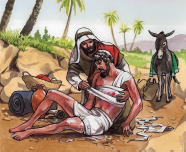 Everyone Knows How to Tell a Story, Right?
Everyone Knows How to Tell a Story, Right?
We’ve done it since we began to talk. For many our parents doted on every word whether or not the story actually made sense. This emboldened us to tell even more stories. For the most part we did OK. We learned how to get from point A to point B in the story and we picked up on those cues to see when our listeners were getting bored and we needed to bring things to a conclusion. Rarely did we stop to consider whether or not we were good storytellers. Even more scarcely have we examined how to tell stories strategically. Ultimately all stories have some underlying purpose. They are told to draw attention to the storyteller as the case of the 5 year old telling a story to his parents. Other stories are told to inform or educate. Stories are told to entertain and to invoke emotion. Stories are told to defend ourselves or to persuade others.
But in our context of Media to Movements (M2M) our desire is to craft strategic stories that facilitate people moving further down the path to Jesus Christ and to Kingdom multiplication. Telling good stories, ones that are well crafted and good quality is important. That quality may come through study, through practice and through eliciting and receiving feedback so we can improve. Telling strategic stories that facilitate a M2M work however will involve at a minimum three key components. We need to give our audience a mirror, a way to find themselves and their current need in the story. We need to give our audience some binoculars, an opportunity to see the possibility of change and what the future might look like. And we need to give our audience the first yellow brick, the first step on that path to change.
Why Our Audience Needs a Mirror
One more time before walking out the door we take a last look in the hall mirror, we check to see how our clothes are fitting in the reflection of the stainless steel doors of the elevator, pulling out our phone to turn on the selfie camera and make a quick check to see that our teeth are clean, slowing down as we pass a plate glass window for a good side view, dashing into the restroom and straightening our hair before entering the venue to meet our friends…. Most of us regularly look for a mirror or a reflection of ourselves, it’s natural. The first component in crafting a strategic story that leads to multiplication is that of providing our audience with a mirror. Not a mirror that reflects the audience’s physical appearance but rather one that reflects their current reality, their felt needs, their point of crisis, their fears, their desires.

The Power of Persona

How well we define our persona will also establish how clearly the reflection will be in the mirror of our story. We could define a persona as simply “all the lost people in the country where I serve”. And from that we can craft a story and a character (mirror) that gives the reflection of generic lostness. But the reflection in that mirror may be so fuzzy that our audience only minimally recognizes themselves. If however our persona is “an 18-30 year old female factory worker who has migrated to the country’s largest city who has fears about shaming her family and is afraid of evil spirit”’ we can begin to build a mirror in our story that has a much greater degree of clarity. University students or middle-aged businessmen will not relate to our story at all but most anyone that falls within our persona will be able to see themselves reflected in the mirror of our story. This focus is in part what makes it strategic.
Why Our Audience Needs Binoculars
As we disciple new Believers in our context, one of the first things we help the new Believer with is being able to share their salvation testimony. It is a story. It is their story. And it is a powerful way to influence others for the Gospel. As we train Believers in sharing their testimony, we lead them to write it out in three parts. Part one, “what my life was like before I met Jesus Christ”. Part two, “how I met Jesus Christ and began a relationship with Him”. Part three, “what my life is like today, now that I have a relationship with Jesus Christ”. When we are crafting strategic stories that lead to multiplication, we can’t leave our audience standing at the mirror. We also need to give them a set of binoculars. That’s the third part of the testimony training we give to Believers. When these Believers share their testimony with their friends and they share the first part, their friends are standing in front of a mirror and their thought is, “yes, that’s just the way my life is like today”. The mirror in our story gives a reflection of the current reality of our persona. But our story also must give our audience a pair of binoculars. They need to be able to see the possibility of a new reality, a new future, a new destination that may be far in the distance. Our audience needs to see the possibility of a new reflection. From our training, as Believers share what their life is like today now that they have a relationship with Jesus Christ, they give their hearers that set of binoculars to see what their life could be like.

Why Our Audience Needs a Yellow Brick (First Step)
All too often it seems my normal mode of operation is to be running late. Whether I get distracted with something or just am too long-winded with a previous appointment I frequently sheepishly show up to my next appointment a few minutes late. Sometimes when finishing up with one meeting and heading out for the next, if it’s at a location I’m not familiar with I will look it up on Google Maps on my phone. When the app gives me an estimated travel time, I can get a little frustrated – at the app. (It’s also when I send off my perpetually saved and re-used text message of “Sorry – I’m running late”). There’s no point in me getting frustrated at the app of course. Google’s not responsible for me being late, that’s all on me. Thankfully the app is also there to show me the path I need to take to get to my destination. So, I forgive it. When our strategic stories provide an accurate reflection of current reality, when we have a good mirror of our persona it will draw our audience in. They see themselves and they realize we “get it”. When we then give them a pair of binoculars with a future possibility that is motivating, something they want, then our audience is likewise drawn in further.


Conclusion
We all know how to tell stories. We can all work on and improve the stories we tell to make them good stories. But if we are going to tell strategic stories – stories that have an objective and an aim – stories that can help to facilitate people moving closer to faith in God through Jesus Christ and closer to being faithful disciples, closer to new churches being started, closer to Kingdom multiplication – we need at a minimum these three basic components. We need our story to have a clear mirror that gives our audience a reflection of where they are; their current reality. We need our story to give our persona a pair of binoculars that changes their imagination of who and what they could be. We need our story to show people the first yellow brick, the first step they should take to begin the journey of change. We need strategic stories.
Contributer: AJ

